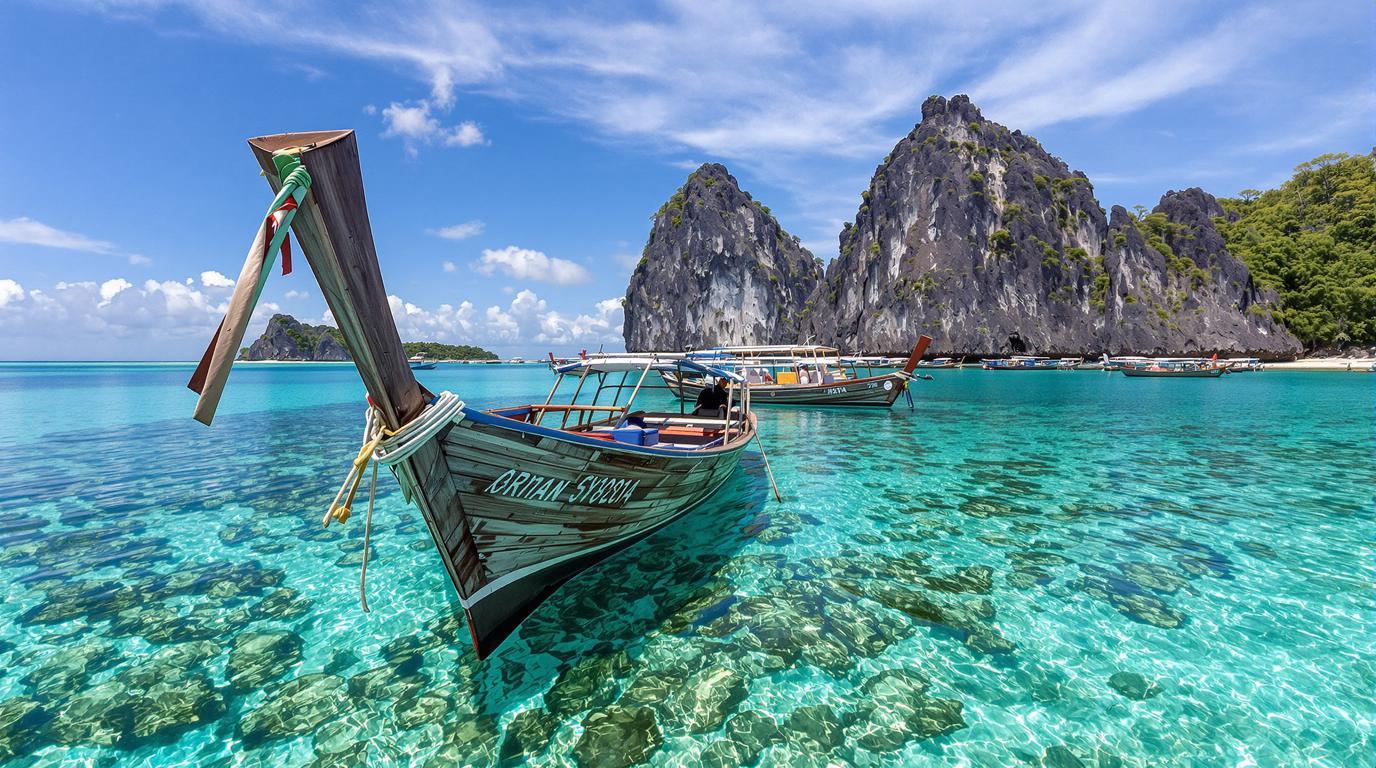Most Indonesian paradise destinations drain your wallet faster than a coconut with a hole. Karimunjawa breaks every rule — pristine coral reefs, traditional fishing villages, and accommodation starting at just $10 per night. Yet locals actively protect this 27-island archipelago from mass tourism, creating an unintentional barrier that keeps prices impossibly low.
While Bali charges $50+ for basic guesthouses and Thailand battles July monsoons, this Central Java marine sanctuary offers perfect 80°F weather and crystal-clear diving conditions. The irony? The very isolation that locals use to preserve their culture creates the most affordable tropical paradise in Southeast Asia.
I discovered this economic anomaly during ferry research from Semarang — a 4-hour journey that acts as the perfect tourist filter, keeping crowds minimal and costs authentic.
The $25 accommodation reality that defies tropical pricing
Budget options that rival luxury elsewhere
Puri Karimunjawa Redpartner offers oceanfront rooms at $10 nightly, while OYO 2496 Puri Karimun starts at $12. These aren’t hostel bunks — they’re private rooms with traditional Indonesian hospitality. Local homestays like Safa Kost charge just $6, providing authentic cultural immersion impossible in resort-dominated destinations.
Mid-range luxury without the premium markup
Three-star resorts average $55 per night, delivering amenities that cost $150+ in Bali. Breve Azurine Lagoon Resort offers beachfront luxury at $180 — still cheaper than comparable Gili Islands properties during peak season. The price difference? No international airport, no cruise ship terminals, no Instagram influencer inflation.
Perfect weather timing while popular destinations struggle
July’s dry season advantage over regional alternatives
Thailand’s July monsoon brings 200mm+ rainfall and rough seas, destroying diving visibility. Karimunjawa’s dry season delivers minimal rain, 60-75% humidity, and calm Java Sea conditions. Sea turtles, dolphins, and pristine coral reefs thrive in water clarity that rivals the Maldives.
Optimal conditions for marine exploration
Water temperatures hover around 82°F with 100-foot visibility — perfect for snorkeling and diving. Traditional fishing boats navigate easily, enabling authentic cultural interactions with local communities. The National Park’s biodiversity remains fully accessible during July’s ideal weather window.
Authentic cultural preservation through controlled tourism
Traditional fishing practices still governing daily life
Local communities maintain centuries-old boat-building techniques visible at every pier. Traditional fishing methods coexist with conservation efforts, creating educational opportunities absent in commercialized destinations. Community guides share flora, fauna, and historical knowledge during respectful island tours.
Community-based tourism protecting cultural integrity
Residents actively limit tourism infrastructure to preserve their maritime heritage. Local regulations within the National Park prioritize ecological health over profit maximization. This protective approach maintains authentic cultural interactions while keeping commercial pressure minimal.
Marine sanctuary status creating unmatched underwater experiences
Coral reef health surpassing famous alternatives
Karimunjawa National Park protects coral ecosystems from the overcrowding destroying Bali’s reefs. Pangolins, sea turtles, and diverse marine life flourish in protected waters. The sanctuary’s isolation prevents the coral bleaching plaguing popular diving destinations.
Sustainable diving practices maintaining pristine conditions
Eco-tours emphasize minimal-impact snorkeling with guides trained in conservation principles. Visitor management keeps diving sites uncrowded, ensuring marine life remains undisturbed. This approach creates underwater experiences impossible in heavily trafficked locations.
Practical access strategies for budget-conscious travelers
Transportation routes maximizing value
Flights to Semarang followed by 4-5 hour ferry journeys cost $15-30 per person. This natural tourist filter eliminates crowds while keeping local services affordable. Cash payments preferred, with limited ATMs requiring advance planning.
Booking platforms and local arrangements
Agoda and Hotels.com offer verified accommodations, while direct local bookings often provide additional savings. Mobile connectivity remains sporadic, requiring offline maps and basic Indonesian phrases for optimal cultural engagement.
Essential travel information for Karimunjawa
When should I visit Karimunjawa for the best weather?
July through September offers perfect conditions — minimal rainfall, calm seas, and excellent diving visibility during the dry season.
How much should I budget daily for Karimunjawa?
Budget travelers can explore comfortably on $35-65 daily, including accommodation, meals, and activities — significantly less than Bali or Thailand.
What makes Karimunjawa different from other Indonesian islands?
Active community protection, National Park status, and traditional fishing culture create authentic experiences unavailable in commercialized destinations.
This $25-per-night paradise represents Indonesia’s best-kept secret — where locals’ protective instincts accidentally created the most affordable tropical sanctuary in Southeast Asia. While others chase overcrowded alternatives, Karimunjawa rewards respectful travelers with pristine reefs, authentic culture, and prices that seem impossible in 2025.
Book your July escape to Karimunjawa accommodations before this hidden gem’s secret spreads. Experience Central Java’s marine wonders while supporting communities that prioritize preservation over profit. Discover why Indonesia’s remote islands offer the authentic paradise experiences that mainstream destinations have abandoned.
